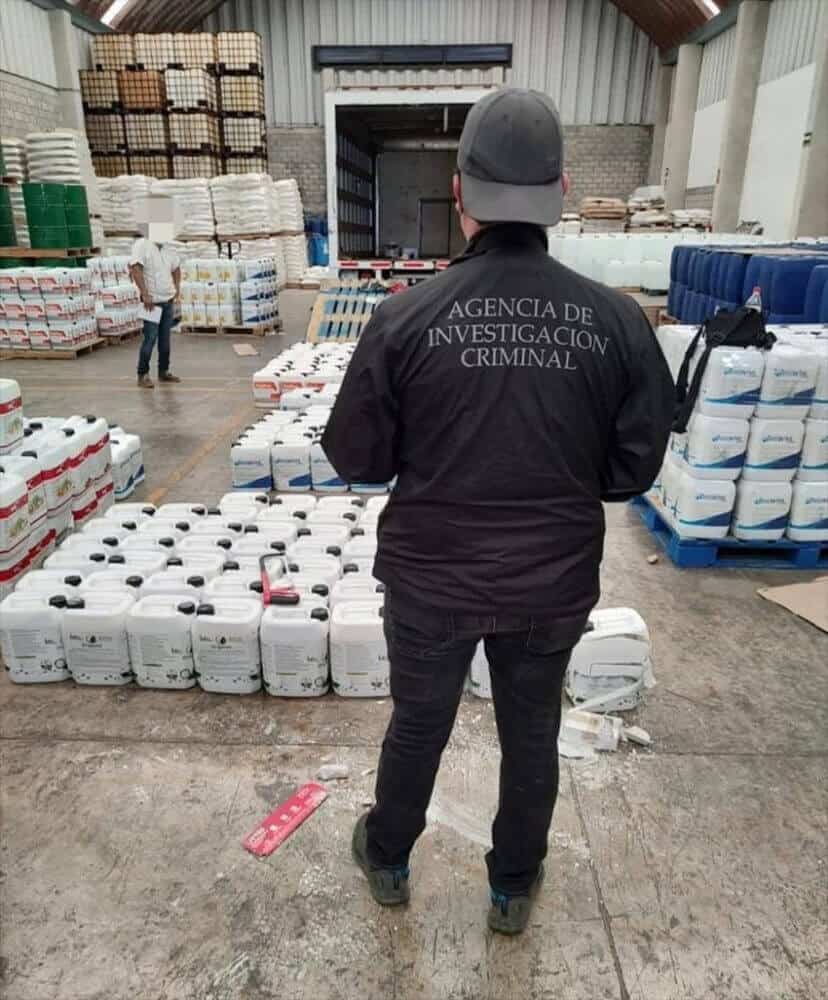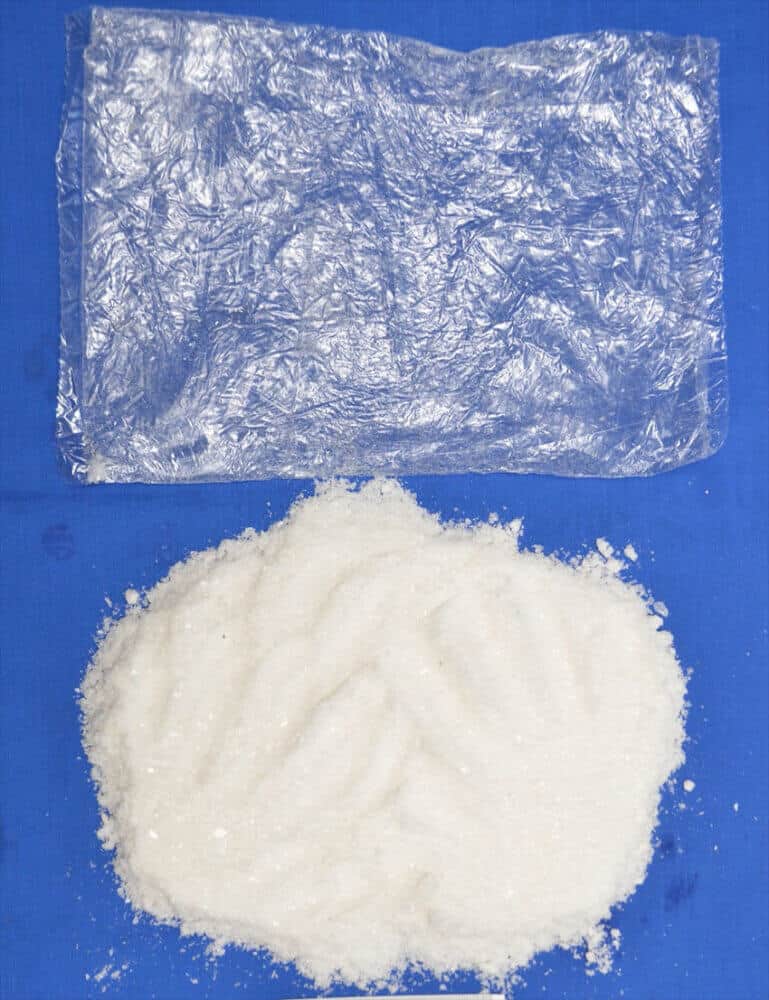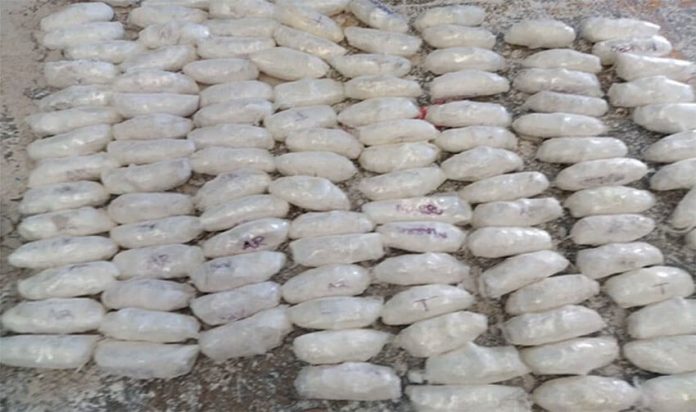An announcement by the Mexican government about the largest seizure of illegal fentanyl in the country’s history appeared to ignore the complex realities of how this synthetic opioid is produced.
On July 13, Mexico’s Attorney General’s Office stated that 10 people in the northern state of Sinaloa had been charged with illegal possession of fentanyl and methamphetamine with intent to sell. These charges came on the heels of the largest seizure of illicit fentanyl ever made in Mexico.
Days earlier, on July 7, the Defense Ministry announced it had seized over half a tonne of fentanyl in powder form from a property in Culiacán, the state capital of Sinaloa. In recent years, most of the clandestine fentanyl labs destroyed by Mexican authorities have been located in Sinaloa.
“The most relevant fact is that, in this operation, 542.7 kilograms of fentanyl were seized. This is the largest decommissioning … in the history of this lethal drug,” stated Ricardo Mejía, Mexico’s deputy minister of public security.

The operation in Culiacán appears to have been sizable. Alongside the fentanyl, 555 kilograms of methamphetamine, 31 kilograms of cocaine, 19 kilograms of opium gum, and almost 7 kilograms of heroin were seized. Furthermore, over 70,000 kilograms of chemical precursors and almost 68,000 liters of chemical substances used to make synthetic drugs were also found.
The previous largest seizure of fentanyl in Mexico also took place in Culiacán, when 118 kilograms of the drug were found in November 2021.
InSight Crime analysis
Data on fentanyl seizures often mask a more complex reality, and should be taken with a grain of salt. Authorities, consumers, distributors, and even illegal producers are often unaware of the actual amount of pure fentanyl present in the synthetic substances being sold or seized.
Fentanyl is a highly potent opioid and as little as 2 milligrams can already be lethal for most users. This means that just 1 kilogram of pure fentanyl could produce around half a million lethal doses.
Therefore, the half-tonne seized by authorities in Sinaloa is unlikely to be pure fentanyl since this would represent a truly colossal amount of doses.
Fentanyl illegally produced in Mexico is commonly mixed with other substances to obtain higher yields in production. Sugars such as lactose, mannitol, and inositol are some of the substances most commonly used to increase fentanyl volumes, according to information from the U.S. Drug Enforcement Administration’s (DEA) Fentanyl Signature Profiling Program (FSPP).
And discoveries within clandestine opioid processing laboratories have also found substances such as metamizole and acetaminophen, both of which are used to increase the volume of the final fentanyl product. Fentanyl is also often mixed with other drugs, such as heroin, methamphetamine, and cocaine.

During field investigations, InSight Crime has found that government agencies in Mexico have the ability to detect whether a substance has fentanyl, but are not always able to determine how much is present. This largely depends on the tools a specific laboratory has access to. This inconsistency has led to a systemic failure in data collection, and implies that the government does not know the real dimension of the phenomenon.
The problem is reflected in the official data provided by security forces. For example, the federal Attorney General’s Office (FGR), the National Guard, the Defense Ministry (Sedena), and the Mexican Navy (SEMAR) all use different measures to quantify fentanyl seizures. This makes it essentially impossible to know how much fentanyl has been seized by the government.
According to data obtained by InSight Crime, Sedena records fentanyl seizures as powder or in units (pills or vials). Meanwhile, the National Guard records the number of pills, bags, wrappers, and packages as well as the weight of the fentanyl in solid and liquid form. Finally, the FGR and SEMAR record the weight of solid or liquid fentanyl, as well as the number of pills.
As mentioned earlier, these units of measurement do not reveal how much pure fentanyl is present in the drugs.
Besides authorities, even drug cooks are often not aware of how much fentanyl is in their product, according to several subject matter experts consulted by InSight Crime in Mexico City.
“Even if [cooks] manage to make the product, they don’t necessarily have the chemical knowledge to know the right measurements or to achieve purity. So several contaminants remain,” Silvia Cruz, a Ph.D. in pharmacobiology and researcher at the Center for Research and Advanced Studies at Mexico’s National Polytechnic Institute, told InSight Crime.
Reprinted from InSight Crime. Victoria Dittmar and Sara Garcia are writers with InSight Crime, a foundation dedicated to the study of organized crime.
